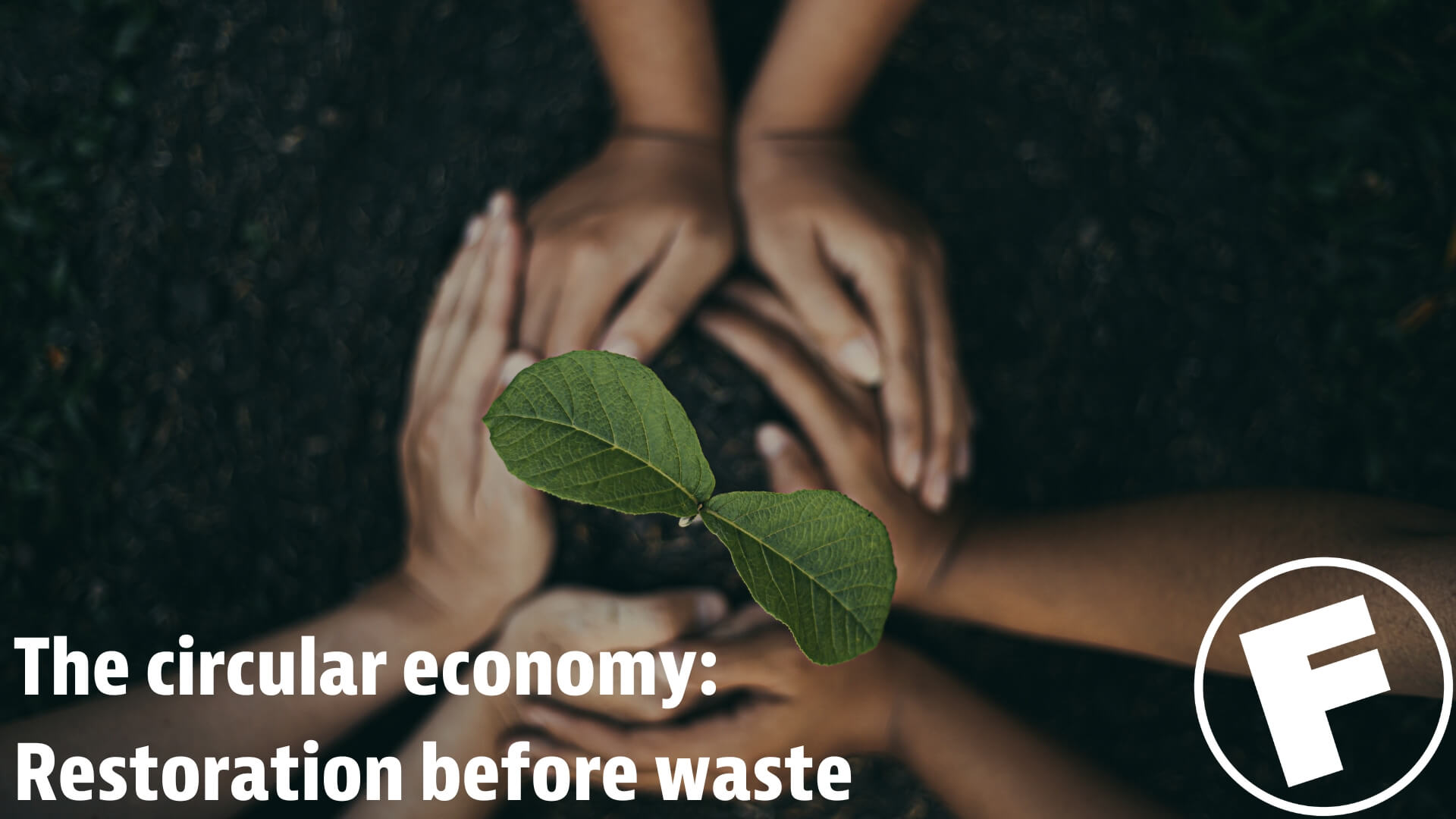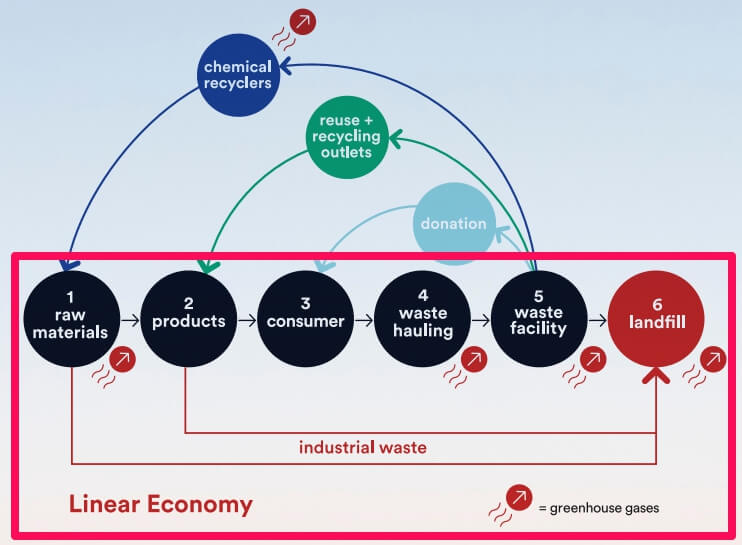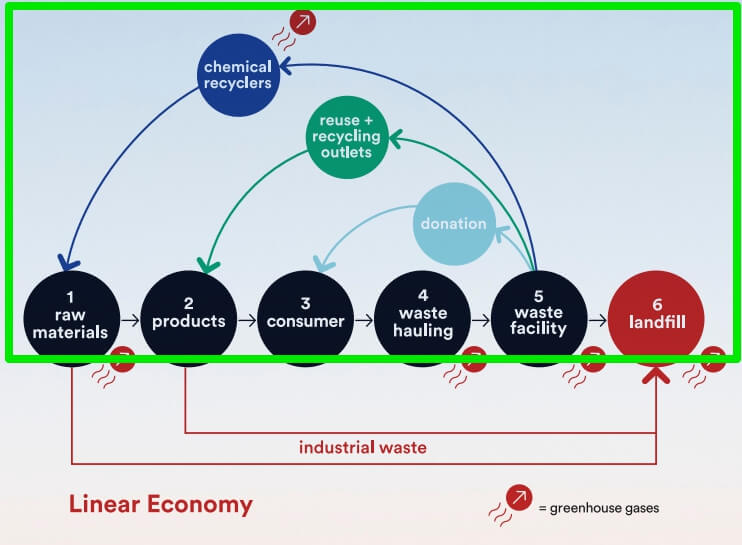The Circular Economy and its Importance for Our Future
The world is changing. With climate change looming, and natural resources dwindling, the need for renewable energy sources and circular business models grows. A circular economy has many benefits for the future of commerce, business, and the well-being of humanity overall.
In this article, we’ll outline what a more circular economy means, its value, and its importance for our future. Let’s dive in!

A culture of reuse: Business models that mirror sustainability
Reducing emissions from driving, manufacturing, and waste disposal. Eliminating plastics from our oceans and environment. Utilizing natural resources more sustainably. The list goes on.
These are all strategies you hear on the news every day for preventing climate change.
They’re also strategies that typically cause viewers to gasp, shake their heads, then very quickly return to the status quo—and that means resources that are stretched thin and a lot of waste.
“Today, humanity uses the equivalent of 1.6 Earths to provide the natural resources we use and absorb our waste.”
Perhaps—in a wave of earnest dedication to limiting their own environmental impact—those same viewers might opt to forgo their commute by working from home for a few days. Only to find themselves—engine idling—picking up coffee from the drive-thru the instant that sense of urgency for the environment fades.
So what can be done to cause a genuine and impactful shift in consumer behavior toward sustainability? And what might be the impetus for businesses truly dedicating themselves to the climate change agenda?
At Fibrenew, we don’t claim to know all the answers. What we do believe, though, is that a commitment and contribution to a “circular economy”– in contrast to the more pervasive linear economy–is a defining characteristic that sets businesses apart.
A business model imbued with the spirit of refurbishment and restoration leads to a supply chain that becomes more of a closed loop, rather than a straight shot to the landfill. This prolongs the lifecycle of valued products, saves money, and aligns with environmental initiatives.
Participation in the circular economy will create a brighter future for the economy and all businesses–our franchisees included–and we’ll explain why.
The linear economy—and just how twisted it actually is
The linear economy is notorious for its inherent wastefulness—earning it the not-so-favorable title of the “take, make, waste” economy. It’s referred to as “linear” because of the one-way route that materials and products take to the landfill.
“The negative effects of this approach, in the form of environmental damage [plus valuable material and biodiversity loss] are clear. They are driven by the mismanagement of resources and land in industries across the economy, including agriculture, construction, and transport.” -The Ellen Macarthur Foundation
In a linear economy, raw materials are sourced with the intention of eventually (and rapidly) becoming waste, rather than having reusable or regenerative qualities. In regions where volume-based manufacturing is vital—China, for example—single-use products reign, while sustainable development tends to take a back seat.
This puts a tremendous strain on waste management systems and significantly increases greenhouse gas emissions, as every step of the supply chain when manufacturing plastics and other ubiquitous environment-damaging materials leads to the major release of fossil fuels.

The linear economy’s significant greenhouse gas emissions.
Source: “Circular Economy: What is it + how does it work?”
Our friends at the United Nations say that an action plan is needed—and that a primary way of reversing the damage caused by the traditional linear economy is to reduce, reuse, repair, and recycle:
“Electronics, clothes, plastics, and other items we buy cause carbon emissions at each point in production, from the extraction of raw materials to manufacturing and transporting goods to market. To protect the climate, buy fewer things, shop second-hand, and repair what you can. Plastics alone generated 1.8 billion metric tonnes of greenhouse gas emissions in 2019 – 3.4 percent of the global total. Less than 10 percent is recycled, and once plastic is discarded, it can linger for hundreds of years. Buying fewer new clothes – and other consumer goods – can also reduce your carbon footprint. Every kilogram of textiles produced generates about 17 kilograms of CO2e.”
Thankfully, the emerging culture of reuse and recycling is leading to consumers and businesses embracing circular-economic principles on a much wider scale.
So how does a circular economy help?
A circular economy flips the script, stimulating a different form of economic activity and economic growth. This emphasizes recirculating products back to various points in their lifecycle—making it an economic system that effectively extends their usefulness far beyond the linear cycle.
In short:
“The circular economy is one where businesses and consumers work together to make things last and get as much value from our products and resources as possible.”
The main argument against a circular economy is that it will cause stakeholders in manufacturing to take a hit as the demand for new, cheap, limited-use product design to plummet. While the argument is valid from one perspective, the International Labour Organization predicts that “circular economic practices will cost the world 71 million jobs by 2030, but will more than make up for it by creating 78 million jobs over the same time period.”

Recirculation of products throughout their lifecycle.
Source: “Circular Economy: What is it + how does it work?”
Adoption of the circular economy model is growing, too. For example, policymakers in the European Union—which produces some “2.2 billion tonnes of waste every year”—are making moves to reduce waste and increase longevity widescale.
This philosophy, when put into practice, has a number of positive impacts:
Key benefits of a circular economy
A circular economy:
- Creates new employment opportunities
- Improves social and economic justice
- Reduces the use of limited resources
- Saves consumers money long term
- Cuts cost of raw materials
- Lowers carbon emissions
- Lessen waste streams
While these are only a handful of benefits, you can read about them in more detail here and here.
How brands can adopt a more circular business model
These strategies will be highly subjective depending on the industry your business is in. But they apply across the board when tailored to the needs and processes of any business.
The Harvard Business Review outlines three key strategies:
- Retain Product Ownership (RPO): licensing or renting products provides incentives to businesses that wish to retain ownership. They can eventually recover their products, repair or regenerate them if necessary, and then reintroduce them into the circular economy.
- Product Life Extension (PLE): extending the value chain of your products is a very circular approach wherein the product can be repaired or reused to reduce the need for redesign and/or remanufacturing.
- Design for Recycling (DFR): designing recycling programs or having partnerships in place from the get-go will help reduce overall plastic waste and plastic pollution in the long run. Increase your competitiveness in the circular ecosystem by designing for recycling.
Check out more on these three strategies in HBR’s “The Circular Business Model” article.
Fibrenew helps create more sustainable businesses
We hope you feel inspired by learning more about the circular economy, as our aim is for our philosophy of sustainability to resonate with everyone that’s willing to listen.
So, if owning and running a business that earns you a great living while simultaneously doing right by the environment sounds exciting—do we have an opportunity for you!
Learn everything there is to know about becoming a Fibrenew franchisee by joining our webinar and requesting more information today. See you there!


